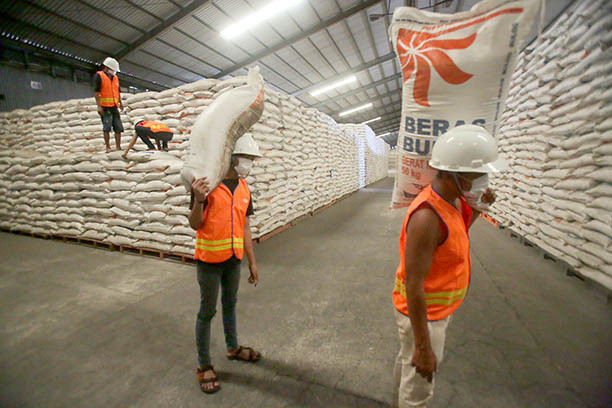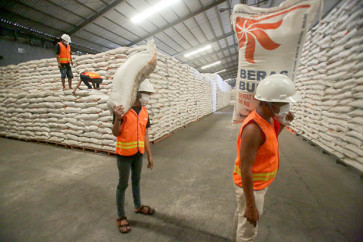Popular Reads
Top Results
Can't find what you're looking for?
View all search resultsPopular Reads
Top Results
Can't find what you're looking for?
View all search resultsNo rice, no bread, no peace: Food security is a national security
The big question is whether the shortfall of rice that needs to come from Thailand and Vietnam will be available next year or not.
Change text size
Gift Premium Articles
to Anyone
F
ood security as a policy issue has evolved to reflect the dynamism of global events. The increasing attention paid to food’s impact on poverty, humanitarian crises and conflicts all suggest that food security is a national security concern.
More than its contribution to economic development, food security is also part of robust defense systems. Food insecurity is a physical and psychological state.
History has shown that hungry human beings are considerably less governable than nourished ones. This can be more easily understood by its absence when food insecurity has frequently led to unrest and hardship.
Food insecurity can occur with price instability. The food price crisis of 2008 and related riots that accompanied the Arab Spring, the upheaval in Haiti due to increases in the price of rice and the corn riots in Mexico because of high costs of staples like tortillas provide a good example that food has entered the security space.
The war in Ukraine has delivered a shock to the global energy markets. Now the world is facing a deeper crisis: a shortage of food. Ukraine's agricultural land produces a major share of the world’s wheat, corns, barley, rye, sunflower oil and potatoes. Global food prices are climbing at their fastest rate on record, threatening millions of people around the globe with hunger and malnourishment. The World Bank says the Ukraine war will cause the worst price shock in 50 years, and it is not only food but oil and natural gas as well.
Russia is steering the world toward an increasingly severe food security crisis, compounding the shortages already caused by the COVID-19 pandemic and climate change. Ukraine’s crop exports are plummeting as Russian forces paralyzed Ukrainian ports. Meanwhile, Western sanctions are disrupting the flow of crop exports from Russia. Russia and Ukraine together account for 30 percent and 20 percent of global wheat and corn exports, respectively.
India, the second-largest producer of wheat, has banned exports of the commodity due to a risk to its food security. India had set a goal of exporting 10 million tons from 2022 to 2023, much of which would have gone to Indonesia, the Philippines and Thailand. India’s wheat harvest has suffered from record-breaking heat and its own stocks have been strained by the distribution of free grain during the pandemic. China and the United States have had their worst seasons in history.


















